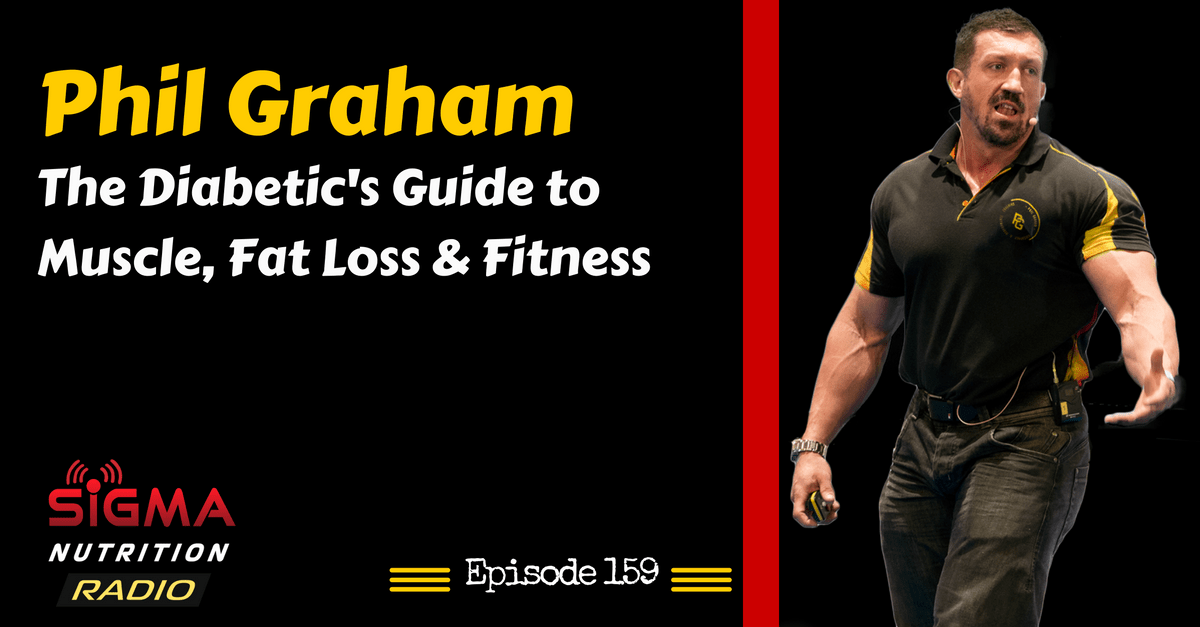Type 1 Diabetes (T1D) requires a great deal of self-management in dealing with medication, food, physical activity and related lifestyle issues. It also presents with related health issues and about 60% of those with T1D are overweight or obese, ~40% have high blood pressure, ~60% have unhealthy levels of blood lipids and many do not achieve healthy levels of physical activity (Riddell et al, 2017; McCarthy et al, 2016)
To see the content for our 6 week programme click here
Contents
Exercise for those with T1D
Adults with T1D that are physically active are less likely to experience retinopathy and microalbuminuria, and have a better chance of achieving HbA, blood pressure and BMI targets. Regular exercise can also decrease total daily insulin needs if managed appropriately (Chimen et al, 2012).
Despite the benefits of physical activity for those with T1D, many experience barriers to becoming more active. Perceptions of having insufficient time, an absence of motivation, and body image issues are all common to the general population however these are often accompanied in the those with T1D with a fear of hypoglycemia and loss of glycemic control, and limited knowledge around exercise management.
In contrast many people with T1D are able to remain physically active and are motivated by experiencing the physical benefits from exercise, improvements in body image, the enjoyment that results from certain activities and the social interaction of exercising at gym or in groups. It’s also been shown that advice and encouragement around managing diabetes for exercise can help.
Exercise metabolism in health and in T1D
In healthy individuals, glucose balance is maintained during exercise via a range of responses that involve growth hormone, cortisol, insulin, glucagon and adrenaline. In those with T1D however, these counter-regulatory responses may be abnormal or even absent.

A summary of the metabolic and endocrine responses to moderate, constant-load exercise in healthy and T1D subjects (from Codella et al, 2017)
Physical Activity Guidelines
Diabetes specific health-related physical activity guidelines are quite similar to those for the general population and include the following recommendations:
- Aim for 150min accumulated Moderate to Vigorous Physical Activity (PA)
- Have no more than 2 days of not being physically active.
- Perform resistance exercise twice a week
NICE Guidance
The National Institute for Health and Care Excellence (NICE) have produced a number of documents related to T1D and physical activity. They are outlined below:
NICE (NG47) Type 1 diabetes in adults: diagnosis and management Recommendations on physical activity
NICE (TA151) Continuous subcutaneous insulin infusion for the treatment of diabetes mellitus
Glucose Homeostasis During and After Exercise
Insulin and carbohydrate intake can be adjusted to prevent hyper- or hypoglycemic episodes during or after exercise.Ideally, blood glucose checks should be made every 30 min during physical activity so that actin can be taken if needed. This attention to monitoring is also important after exercise as increased insulin sensitivity can occur 7 to 11 hours post exercise.
For more on exercising with continuous subcutaneous insulin infusion (CSII) therapy click here

Scheme of the indications (nutritional and insulin adjustments) for maintaining glucose homeostasis during constant-load, moderate exercise in T1D-subjects according to the most reported guidelines (from Codella et al, 2017)
Contraindications and cautions for exercise
There are very few people for whom exercise and activity will not provide more benefits than risks. Despite that, there are some considerations that those with T1D should make prior to exercising (Riddell et al, 2017)
Elevated ketones
Elevated ketones (≥1.5 mmol/L) or urine ketones (≥2+ or 4.0 mmol/L) before a bout of exercise should be addressed before the start of the exercise session. Blood ketones of ≥3.0 mmol/L or more should be managed immediately by a qualified health-care professional.
Recent hypoglycemia
Severe hypoglycemia or a hypoglycemic event requiring help from another individual within the previous 24 hour period is a contraindication to exercise. Where mild hypoglycemia has occurred, the increased risk of recurrence must be taken into account.
Individuals with long-standing disease, with HbA1c levels well above the target, or with unstable retinopathy or severe autonomic dysfunction or renal failure should avoid vigorous exercise.
Inadequate preparation for exercise-associated hypoglycemia
Those with T1D should be aware of their starting glucose concentrations, and should have blood glucose monitoring equipment and snacks ready to treat hypoglycemia. They should be encouraged to carry some form of diabetes identification.
Aerobic Exercise in T1D
Aerobic exercise is physical activity that increases the heart rate and breathing rate above resting values and ideally also results in you feeling slightly out of breath for at least short periods of time. It can be achieved in many different ways such as walking, cycling, dancing or going to the gym.
 Aerobic training can help improve insulin sensitivity, blood lipid profile, physical fitness and enhance psychological well-being. Its also been shown to increase energy expenditure, decrease blood pressure and decrease the risk of CVD.
Aerobic training can help improve insulin sensitivity, blood lipid profile, physical fitness and enhance psychological well-being. Its also been shown to increase energy expenditure, decrease blood pressure and decrease the risk of CVD.
The ADA recommend that children and adults should perform at least 60 min or more of moderate to vigorous intensity aerobic exercise each day. Adults should do at least 150 min/week over 3-7 days per week (no more than 2 consecutive days of rest) at moderate-to-vigorous intensity (50-70% HRmax). Those able to run at about 10 km/h could work at a higher intensity by running 75 min/wk in at least 25 min blocks.
Resistance Exercise in T1D
Strength peaks around 25 years of age, then plateaus at around 35-40 years of age. Inactive adults can experience a 3-8% loss of muscle mass per decade across their lives though which can be accompanied by reductions in resting metabolic rate, fat accumulation and many other issues.
In people with T1D, additional skeletal muscle abnormalities have been shown such as loss of muscle fibre size, increase in glycolytic enzymes, slower conduction rates, a preference for using stored muscle glycogen as a fuel and early dehydration and acidosis, all factors that can promote early fatigue.
The good news is however, that Resistance Training has been been shown to be effective in counteracting these effects and has also been shown to be effective in minimising the risk of hypoglycemia post-exercise in those with T1D (Codella et al, 2017).
The ADA recommends adults perform moderate to vigorous resistance activities. 2-3 days/week on non-consecutive days. They recommend 8-10 exercises with completion of 1-3 sets of 10-15 reps near to fatigue per set (that’s pretty much the same as the guidelines for the general population)
There are many ways in which these resistance guidelines can be met whether it be in a gym setting, at home using body weight and resistance bands or in a class such as yoga or pilates. They key is to start with a few simple exercises, then build up progressively.
When resistance and aerobic exercise are undertaken in one exercise session, performing resistance exercise first results in less hypoglycemia than when aerobic exercise is performed first.
Resistance Exercise can also be good for conditioning the core and helping to manage/prevent back pain. Click here to find out more
Further Resources
Diabetes Online Education from University of California
References & Further Reading
Farinha, J. B., da Silva Krause, M., Rodrigues-Krause, J., & Reischak-Oliveira, A. (2017). Exercise for type 1 diabetes mellitus management: General considerations and new directions. Medical Hypotheses. https://doi.org/10.1016/j.mehy.2017.05.033
Chimen, M., Kennedy, A., Nirantharakumar, K., Pang, T. T., Andrews, R., & Narendran, P. (2012). What are the health benefits of physical activity in type 1 diabetes mellitus? A literature review. Diabetologia, 55(3), 542-551. https://link.springer.com/article/10.1007/s00125-011-2403-2
Chu, L., Hamilton, J., & Riddell, M. C. (2011). Clinical management of the physically active patient with type 1 diabetes. The Physician and Sportsmedicine, 39(2), 64-77. http://www.tandfonline.com/doi/abs/10.3810/psm.2011.05.1896
Codella, R., Terruzzi, I., & Luzi, L. (2017). Why should people with type 1 diabetes exercise regularly?. Acta Diabetologica, 1-16. https://link.springer.com/article/10.1007/s00592-017-0978-x
Colberg SR, Sigal RJ, Yardley JE, et al (2016) Physical activity/exercise and diabetes: A position statement of the American Diabetes Association. Diabetes Care 39:2065–2079. doi: 10.2337/dc16-1728
Colberg SR (2017) Key Points from the Updated Guidelines on Exercise and Diabetes. Front Endocrinol 8:33. doi: 10.3389/fendo.2017.00033
Galassetti, P., & Riddell, M. C. (2013). Exercise and Type 1 Diabetes (T1DM). Comprehensive Physiology. 3:1309-1336. http://onlinelibrary.wiley.com/doi/10.1002/cphy.c110040/abstract
McCarthy, M. M., Funk, M., & Grey, M. (2016). Cardiovascular health in adults with type 1 diabetes. Preventive Medicine, 91, 138-143. http://www.sciencedirect.com/science/article/pii/S0091743516302250
Riddell MC, Gallen IW, Smart CE, et al (2017) Exercise management in type 1 diabetes: a consensus statement. Lancet Diabetes Endocrinol 8587:1–14. doi: 10.1016/S2213-8587(17)30014-1
Pinsker JE, Kraus A, Gianferante D, et al (2016) Techniques for Exercise Preparation and Management in Adults with Type 1 Diabetes. Can J Diabetes 40:503–508. doi: 10.1016/j.jcjd.2016.04.010




